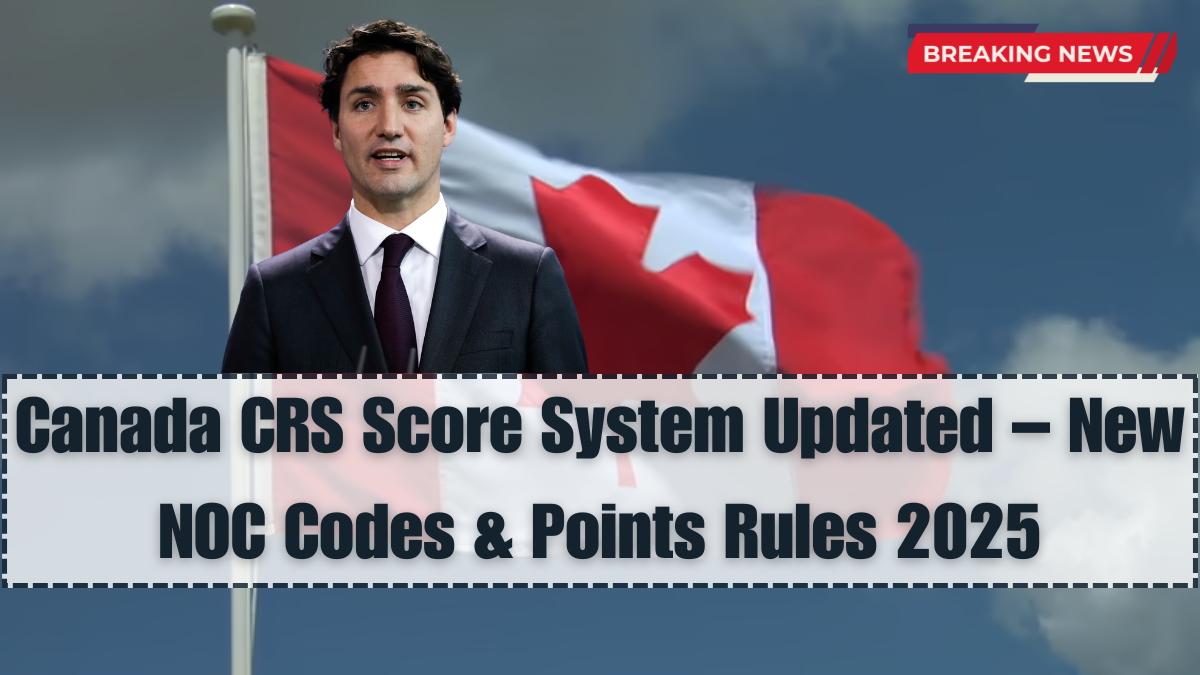The Canada Immigration Points 2025 system has undergone a major overhaul with updated CRS scoring criteria and a newly implemented NOC (National Occupation Classification) code system. Immigration, Refugees and Citizenship Canada (IRCC) officially rolled out these changes to better align the Express Entry system with Canada’s evolving labour market demands. As of June 2025, all Express Entry applicants are now evaluated using the NOC 2021 version, which replaces the previous 2016 version.
This update marks a crucial shift in how Canada assesses the eligibility of skilled workers across the Federal Skilled Worker (FSW), Canadian Experience Class (CEC), and Federal Skilled Trades (FST) programs. The new structure introduces revised occupation codes, skill categories, and changes in CRS point calculations, allowing applicants with in-demand skills to have a stronger chance of being invited through Express Entry.
These modifications ensure the Canada Immigration Points 2025 system remains responsive to economic demands, giving priority to applicants with the right skill sets in sectors like healthcare, construction, transportation, and STEM fields.

Key Changes in CRS Scoring Under the 2025 System
The Canada Immigration Points 2025 system continues to use the Comprehensive Ranking System (CRS) as the main method to evaluate Express Entry applicants. However, several scoring components have been revised:
-
French Language Proficiency Bonus Increased: Now up to 50 extra CRS points for high proficiency in French (CLB 7 or above)
-
Updated Work Experience Categories: Canadian and foreign experience aligned to new TEER (Training, Education, Experience, and Responsibilities) levels under NOC 2021
-
More Weight to STEM and Health Professions: These categories receive targeted invitations and are ranked favourably
-
Points for Education in Canada Remain: 15–30 points for post-secondary education in Canada
-
Provincial Nomination Still Adds 600 Points: This remains the fastest route to getting an ITA
With these updated criteria, candidates can now optimize their profiles under the Canada Immigration Points 2025 system by focusing on high-demand sectors and boosting language scores.
NOC 2021: New Occupation Codes and TEER Levels
A major change under the Canada Immigration Points 2025 system is the shift from NOC 2016 to NOC 2021, which introduced a five-level TEER (Training, Education, Experience, and Responsibility) classification.
Here’s a comparison between the old and new system:
| Old NOC 2016 | New NOC 2021 (TEER) | Explanation |
|---|---|---|
| Skill Level 0 | TEER 0 | Management roles |
| Skill Level A | TEER 1 | University degree required |
| Skill Level B | TEER 2 & 3 | College diploma/trade certification needed |
| Skill Level C/D | TEER 4 & 5 | Secondary education or on-the-job training |
Applicants must now select their new NOC 2021 code that matches their job duties accurately. This is critical because mismatches can lead to application rejection under the Canada Immigration Points 2025 guidelines.
How to Improve Your CRS Score in 2025
With stiffer competition and more tailored draws, it is essential to maximize your CRS score under the new Canada Immigration Points 2025 system. Here’s how:
-
Improve IELTS/TEF scores – language points make a significant difference
-
Pursue higher education or ECA (Educational Credential Assessment) for foreign degrees
-
Apply for a Provincial Nominee Program to gain 600 bonus points
-
Learn French – particularly helpful if applying from West Africa, Europe, or North Africa
-
Gain Canadian work experience, if you are already in Canada under a temporary permit
-
Claim spousal points wisely – your spouse’s language skills and education can help too
By refining these areas, you can significantly boost your standing in the Canada Immigration Points 2025 Express Entry pool.
Express Entry Pathways Under the 2025 Points System
The three main immigration streams under Express Entry remain unchanged but now follow the updated CRS and NOC systems. These include:
-
Federal Skilled Worker Program (FSW)
-
Canadian Experience Class (CEC)
-
Federal Skilled Trades Program (FST)
Additionally, Category-Based Draws (introduced in 2023) have become an integral part of the Canada Immigration Points 2025 strategy. These draws are now conducted monthly and target:
-
STEM professionals
-
Healthcare workers
-
French speakers
-
Transport and trades workers
-
Agriculture and agri-food specialists
Being in a targeted occupation significantly increases your chance of receiving an Invitation to Apply (ITA).
FAQs
What is the CRS cutoff score under the 2025 system?
As of June 2025, general draws have CRS cutoffs ranging between 485 and 492, while category-based draws can go as low as 465 depending on demand.
What is NOC 2021 and how does it affect my application?
NOC 2021 is the updated job classification system used by Canada. It assigns new TEER levels to every job code, which you must match with your work experience.
Can I still apply with an old NOC code?
No, applications under the Canada Immigration Points 2025 system must use NOC 2021 codes. The old NOC 2016 codes are no longer accepted.
What happens if I choose the wrong NOC code?
Your application may be rejected for misrepresentation. Always match your duties with the correct NOC 2021 job title and description.
Is French now required for Express Entry?
No, but applicants with strong French skills receive up to 50 additional CRS points, giving them a competitive advantage.
Click here to know more.
